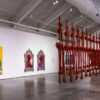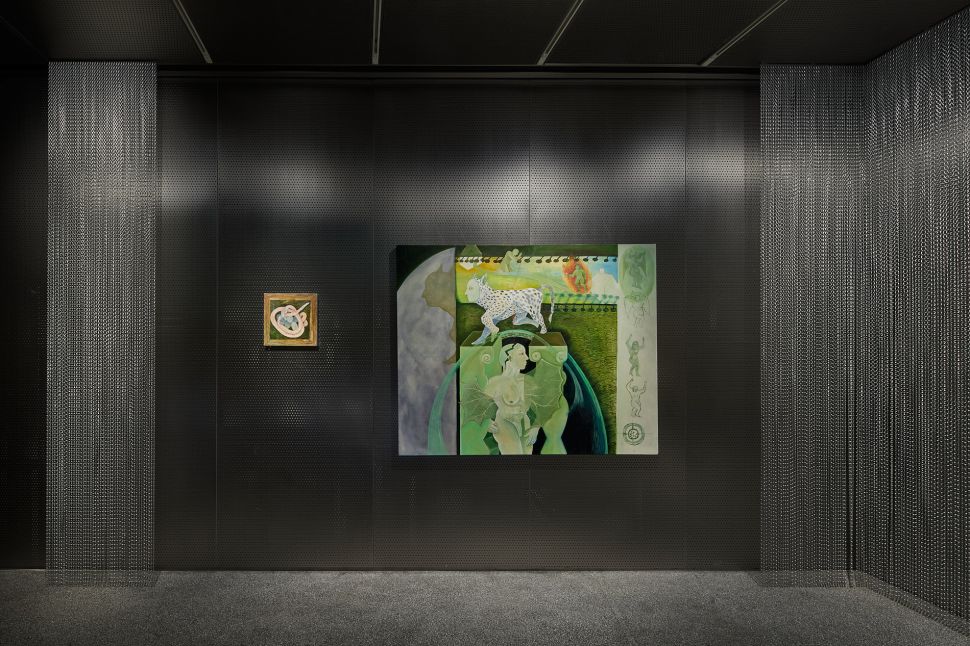
Kicking off the September art fair calendar, Frieze Seoul returns to the South Korean capital alongside the country’s first international art fair, Kiaf SEOUL, for Seoul Art Week, and the city’s vibrant art scene is ready to activate with a rich program of gallery and museum exhibitions you won’t want to miss. Most major events across the city will be on Hannam Night (September 3), Samcheong Night (September 4) and Cheongdam Night (September 5), with the requisite after-parties to follow, though plenty of the must-see shows run through the end of the month or even the end of the year. Observer pored over the Seoul Art Week schedule and put together a list of exhibitions art lovers visiting Seoul for the fairs should prioritize in their off hours.
Anicka Yi at Leeum Museum Of Art
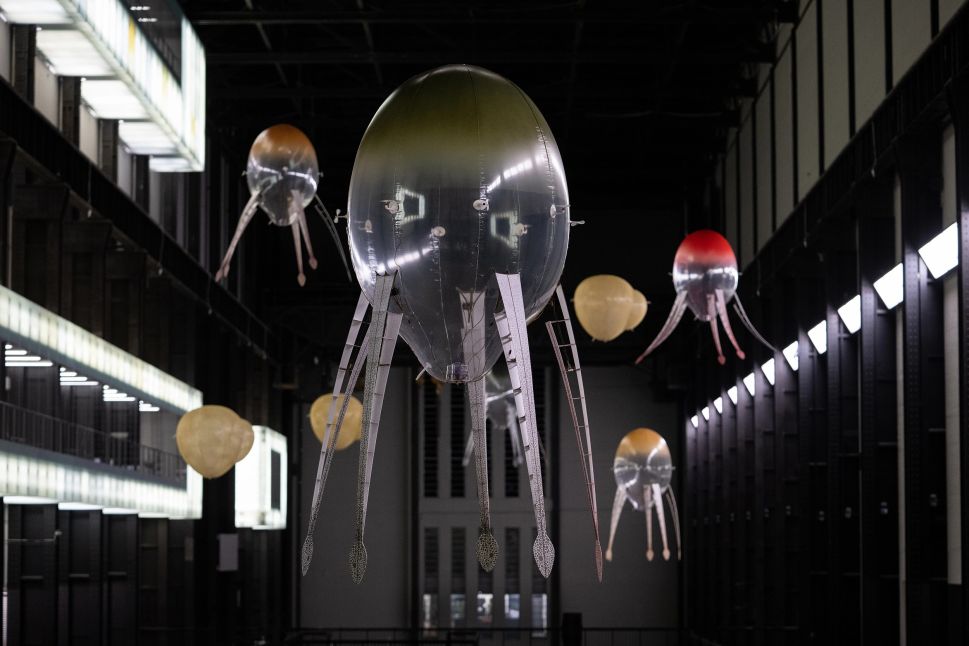
Marking Yi’s first comprehensive museum exhibition in Asia, “There Exists Another Evolution, But In This One” presents a complete overview of the visionary practice of the Korean-born and New York-based artist. Blurring the line between natural and artificial, art and science, Anicka Yi’s works are often made with organic and ephemeral materials such as bacteria, fungi, scent or flowers—natural processes are at the heart of her artistic practice and research. This translates into complex installations that unveil biological and chemical dynamics while highlighting the esthetic potential of natural elements in their pure form (not contaminated by human interventions). Drawing inspiration for its title from the enigmatic nature of Zen Buddhist koans, the exhibition provides unique insights into Yi’s distinctive artistic universe while reflecting meditative and spiritual shifts in her recent works, which are powerful poetic metaphors of human and non-human relations and interactions. Established by the Samsung Foundation of Culture, the museum is a must-visit stop on any Seoul art trip, with its permanent installations by artists like Olafur Eliasson and Daniel Buren.
Anicka Yi’ “There Exists Another Evolution, But In This One” opens on September 5 and runs through December 29.
“Connecting Bodies: Asian Women Artists” at the National Museum of Modern and Contemporary Art, Korea (MMCA)




Through 130 works by women artists from eleven Asian countries, this elaborate exhibition at the MMCA embarks on an examination of post-1960s art by Asian women from the perspective of corporeality. Articulated in six sections—“Choreograph Life,” “Flexible Territories of Sexuality,” “Bodies·God(desse)s·Cosmology,” “Street Performances,” “Repeating Gestures-Bodies·Objects·Language,” and “Bodies as Becoming‒Connecting Bodies”—the show explores various stories about diverse, polyphonous bodies and how women have been defined and claimed their own presence in both intimate and social spaces through their bodies and identities. The show includes well-known names as well as recently rediscovered ones; there are works by Yayoi Kusama, Pacita Abad, Mire Lee, Pinarek Sanpitak, Agnes Arellano and Yoko Ono, to mention a few. More importantly, the show aims to go beyond a simplistic confrontation between Asian women and their Westerner peers, as well as males, and instead present those artists as agents embodied in multilayered ways in a translational discourse that is deeply grounded in their times. The exhibition ultimately presents the many ways Asian women have explored their bodies and their identities in a totalizing integration of thought/sensation and art/life while challenging how different ideologies (e.g., patriarchy, capitalism and nationalism) have influenced their physical selves and psychologies.
“Connecting Bodies: Asian Women Artists” opens on September 3 and remains on view through March 3.
Nari Ward at Lehmann Maupin
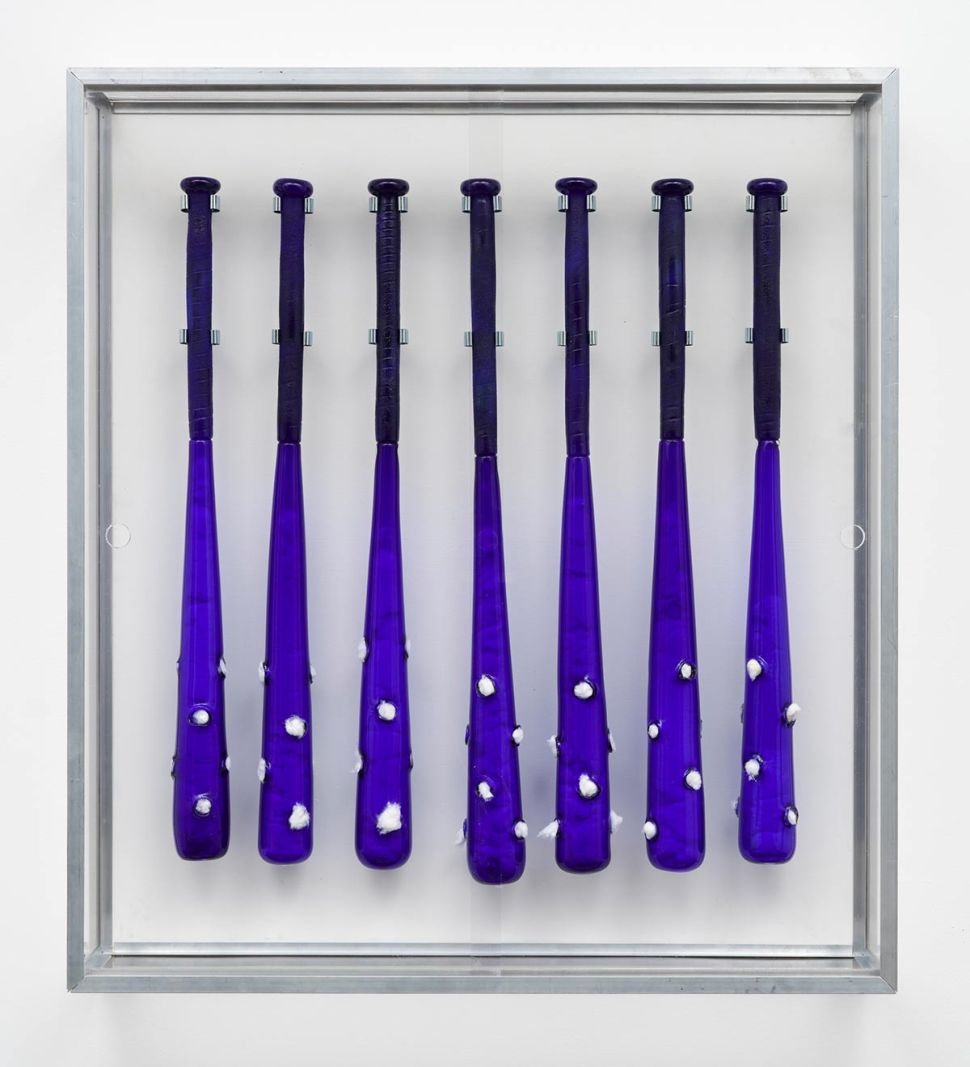



This American artist will be the focus of a double presentation between Seoul and New York at Lehmann Maupin, coinciding with the respective art weeks. Introducing Nari Ward in South Korea with a solo presentation, the gallery will show copper panel works, sculpture and wall-based installations that address aspects of healing and care that shape local communities—specifically in Harlem, the artist’s longtime neighborhood in New York. Titled “ongoin,” the show explores the artist’s dedication to interpretations of spiritual ceremonies and rituals, probing the power of objects to convey cultural memories and collective energies. Using materials and objects as both signifiers and metaphors, he reactivates and recontextualizes them to confront complex social and political dynamics surrounding race, migration, democracy and our sense of community. With his object-oriented practice, Ward deals with prevalent issues in the socio-political fabric of the United States while also addressing concerns that resonate on a global level. The exhibition follows Ward’s recent retrospective, “Ground Break,” at Pirelli HangarBicocca in Milan, and runs in parallel this September with his installation at The Armory Show in New York.
Nari Ward’s “ongoin” runs through October 19.
Kylie Manning at Space-K




Rising art star Kylie Manning is a long way from her first shows at Anonymous Gallery in New York, having joined Pace last year, and now she has her first institutional show in Asia at Space-K Seoul. The Brooklyn-based painter deals with the tradition of abstraction and gesture as filtered through the lens of contemporary German painting. While earning a master’s degree from the New York Academy of Art, Manning went to Leipzig, Germany, where she had a studio down the hall from artists including Christiane Baumgartner and Neo Rauch, working close to the New Leipzig School, which profoundly influenced her approach that encompasses abstraction and surrealism. Her energetic swath of colors fluidly sweeps across the canvases, then crashes as waves and opens them to allow some suggestions of figures to emerge. Magmatically fluid as stormy oceanic waters, her abstract composition disrupts the precise order of reality and related linguistic codes to translate the intense flux of psychic energies. The series on view has been inspired mainly by coastal experiences from her upbringing in Alaska and Mexico and the overlapping of those memories with the ones of the “Yellow Sea” that links China and the Korean peninsula. The immersive dimension of the show allows the visitors to dive into these abstractions, meditating on ‘what is distilled after a tide removes excess debris, noise and marks’ as a powerful metaphor for how our emotional memories and psyche work.
Kylie Manning’s “Yellow Sea” runs through November 10.
Derrick Adams at Gagosian / Amorepacific




Gagosian hasn’t yet joined other international galleries in opening an outpost in Seoul. But this year, it does have a pop-up exhibition in collaboration with Amorepacific, the world-renowned Korean beauty company. With his debut show in South Korea, American artist Derrick Adams is interacting directly with the brand and the space designed by David Chipperfield with a series of new paintings featuring display windows at beauty supply stores he photographed near his Brooklyn studio and around the world. Playing with the notion of beauty and style and how those are both shaped and influenced by cultural identities, groups of mannequin heads adorned with colorful wigs are framed by molded reliefs of bricks as collaged and dimensional elements that contrast with the flatness of the paintings. As typical in his practice, Adams intentionally manipulates notions of flatness and plasticity, real and fantasy, creating fantastic trompe d’oeil that offer commentaries on urban life and, in particular, how Black identity and culture are expressed. In one of his artistic statements, he comments: “What can I reveal that has not been shown? Black people—not entertaining, just being, living. Letting people deal with that as reality.” Drawing from the strategies of Pop considering commercial display, consumer products, identity and desire, Derrick Adams freely blends and allows to coexist geometric motifs that evoke Cubism and African masks, with references to the history of portraiture and adornment from ancient Egyptian and other traditions, tracing here the genesis of this act of societal representation of both status and cultural expression.
Derrick Adams’s “The Strip” opens on September 3 and runs through October 12.
Ho Jae Kim at Gana Art
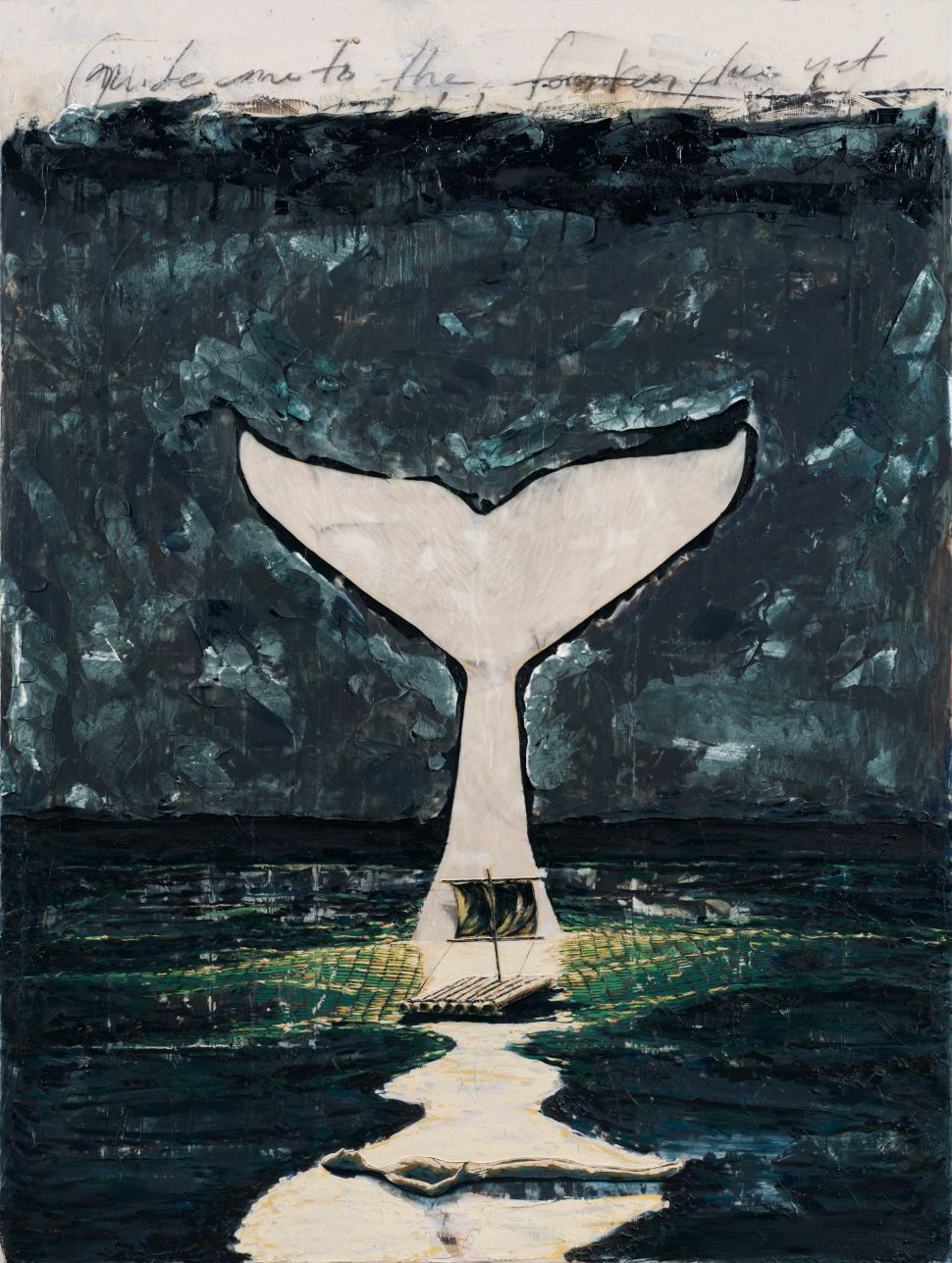



Inspired by the spacial perfection of Renaissance artist and mathematician Piero Della Francesca, Brooklyn-based Korean painter Ho Jae Kim makes highly enigmatic paintings where the sense of reality and time is suspended. Trying to obtain the same perfection in managing space while not being very good at math, the artist found in the possibilities offered by new technology a way to study in minute detail the compositions that are later depicted in his paintings. Transferring this composition onto canvas via a laborious process of layering oil paint and ink, his artistic process proceeds simultaneously in an additive and subtractive way, replicating some mechanisms of how our subconscious minds work. Nourished by a vast set of references from literature, film, philosophy and art history integrated with personal experiences, his subjects are most often portrayed facing their solitude in front of nature or the relics of our civilization. Most of the artist’s work is inspired by this “purgatory” notion, conceived as a transitional place. However, everything there is suspended in a potential or uncertain existence. “Beyond the religious, there are many purgatories in our contemporary lives when we are neither here nor there but somewhere,” Kim told Observer. “Whether it is searching for one’s identity, sitting on a long flight between countries, or walking under endless scaffolds and construction sites in New York, we exist in and around indeterminate states.”
Ho Jae Kim’s “Castaway” runs through September 22.
Myriu Yoon and Astrid Terrazas at Foundry Seoul
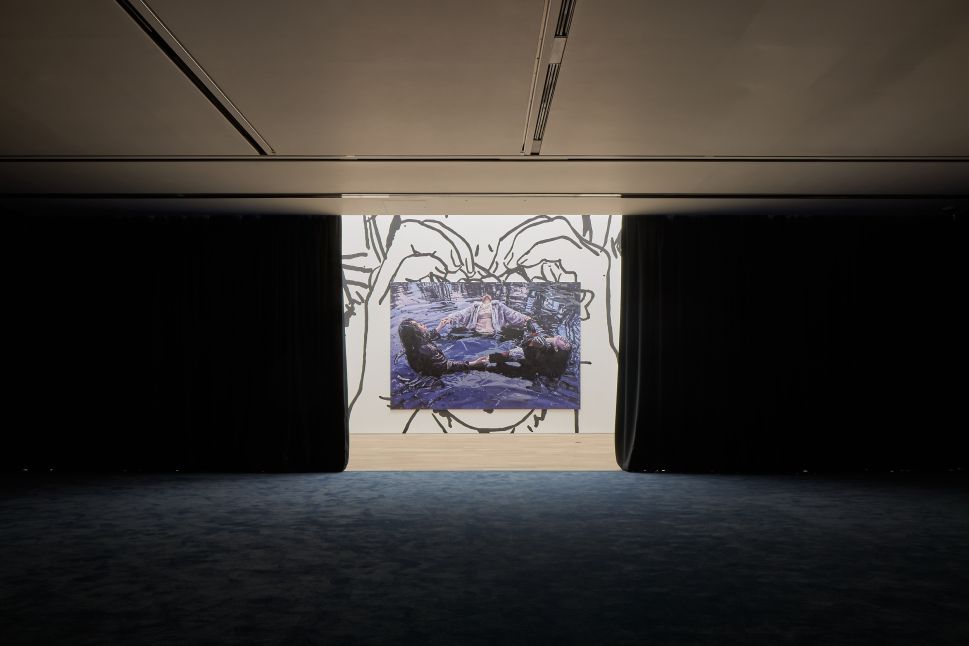



Foundry rapidly made its name in the international art scene with its exciting program. During Seoul Art Week, the gallery will have on view a fascinating exhibition presenting thirty-three new paintings by Korean artist Miryu Yoon set against the backdrop of wetlands. Titled “Do Wetlands Scare You?” the show is inspired by those liminal spaces, “a place where the ground is sunken and always filled with water.” Wetlands are vital habitats for a wide variety of plants and animals, but at the same time, they function as powerful metaphors for a specific psychological and symbolic space. Figurative in the way they portray friends and peers captured with the iPhone Live Photos feature, Yoon’s paintings also become symbolic and more abstract intermediaries of sensations and archetypes the artist seeks to explore while interacting with local myths and folklore. The gallery is also presenting for the first time in South Korea the work of Queens-based artist Astrid Terrazas. Similarly dense with symbolism and tapping into ancestral archetypes, Terrazas’s works link with distinctive Mexican ancestral folklore, blending it with her own lived experiences and unearthly transfiguration. Titled “Los Rostros Falsos,” the show presents the artist’s universe, a visual dream diary full of transient figures, archaic symbols and chimerical narratives. This new body of work by the artist explores the complexities of the menstrual cycle with a series of allegories and symbolic figurations that connect the female body and its ancestral wild energies with the broader universe of nature.
Miryu Yoon’s “Do Wetlands Scare You?” and Astrid Terrazas’ “Los Rostros Falsos” are on view through October 5.
Do Ho Suh at Art Sonje Center and Frieze Seoul
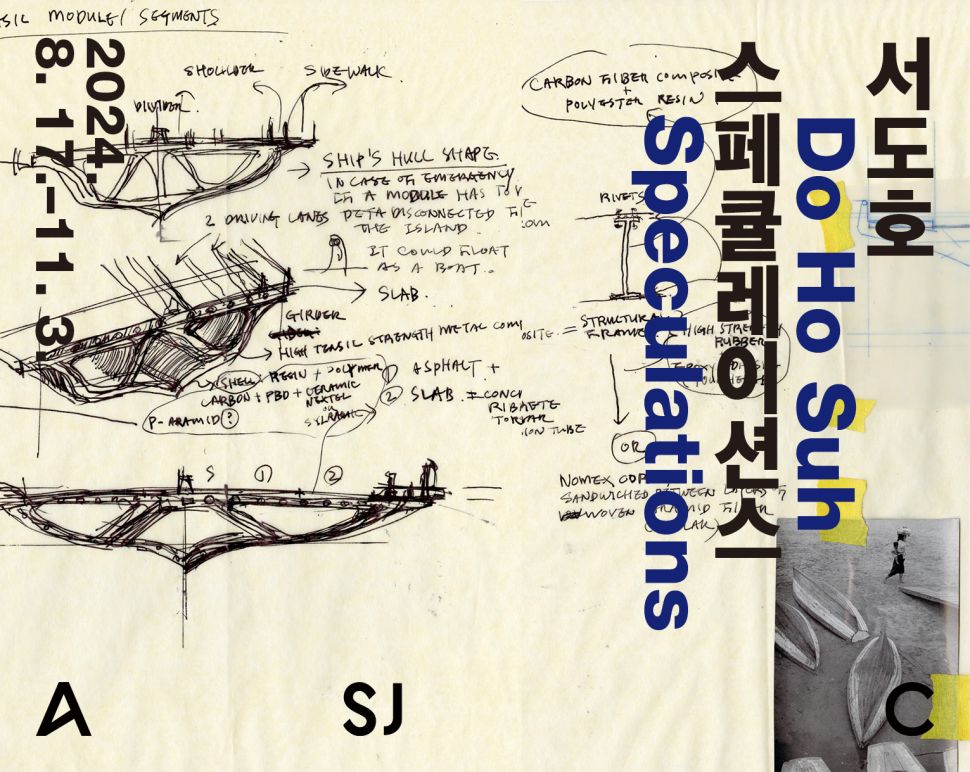



Korean artist Do Ho Suh is known for his ghostly-appealing temporary architecture that imagines alternative worlds. With life-sized replicas of architectural spaces, the artist explores the connections between the body, space and the environment. Organized around the concept of “speculation,” the show at Art Sonje Center unpacks the artist’s process of creation, where profound contemplation follows a similarly deep critical interrogation of the interactions between individuals, communities and the environment. Rather than presenting “completed works,” this exhibition visually represents Suh’s lines of thought, focusing on the process, concepts and investigations that lie at the center of the artist’s practice. Particularly fascinating is Suh’s Bridge Project, in which he envisions his ‘perfect home’ located at the equidistant point between his two home cities (New York and Seoul) in the Pacific Ocean. This exhibition unveils for the first time the work’s new iteration, which includes Suh’s current home in London: the artist’s “perfect home” is now equidistant between three cities in the Chukchi Plateau near the Arctic Beaufort Sea. Questioning with this visual experiment the meaning of living and being attached to different spaces, the artist also explores notions of belonging, identity, national borders and restrictions alongside evolving personal relationships. In this sense, his mainly unfinished diagrams, models and animations represent a search for new possibilities for approaching the complexities of emotion and physical life. Simultaneously, the artist will also present a project at Frieze Seoul in collaboration with LG OLED: an homage from Do Ho Suh and his brother Eulho Suh to their father, Suh Se Ok, also a renowned artist. This has created an intergenerational conversation that reveals essential aspects of how Korean art and aesthetics have rapidly evolved and transformed over just a few decades.
Do Ho Suh’s “Speculations” runs through November 3
Kyungah Ham and Michael Joo at Kukje Gallery




man, smuggling, bribe, tension, anxiety, censorship, ideology, approx. 1400hrs/1 person, velvet, rayon, cotton, polyester grosgrain, herringbone grosgrain ribbon tape, adhesive, wooden, canvas, aluminum frame, 141.7 x 328.4 x 4.4 cm. Courtesy of the artist and Kukje Gallery Photo: Jeon Byung Cheol Image provided by Kukje Gallery
Local powerhouse Kukje Gallery will dedicate its Seoul spaces to exhibitions showcasing the work of two Korean artists, Kyungah Ham and Michael Joo, who have very different aesthetics but share a similar interest in investigating the notion of human labor and its relation to technology. Ham uses embroidery and North Korean weaving traditions to delve into social and political issues that explore the complexities of the relationship between South and North Korea. By using those textiles in her art that are often made by anonymous craftspeople, the artist interrogates notions of originality, authorship and craftsmanship traditions in opposition to the assimilation of industrial mass production and the accelerated modernization South Korea went through in a few short decades. In “Phantom Maps,” Ham focuses on the notion of the “phantom,” a term that holds significant meaning in the artist’s practice, referring to the invisible cues and connections that power society and constitute the illusion of culture. In this sense, Ham’s embroideries become a receptacle, weaving together layers of shared sociopolitical memory, literary references and poetic allusions while becoming a medium to connect with the “anonymous phantoms” that created them with thousands of hours of labor.
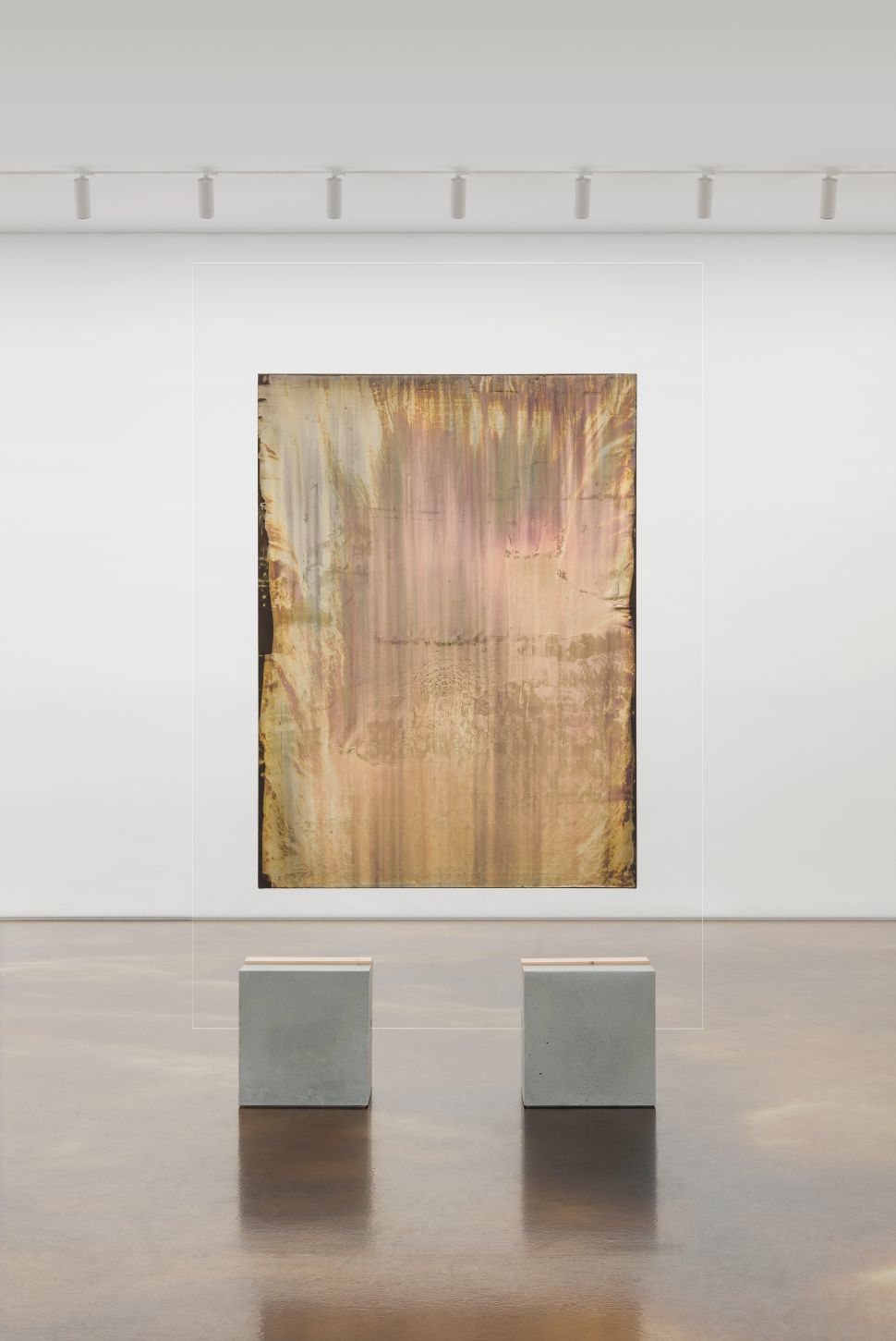



In its second space, Kukje is hosting “Soft Skills and Underground Whispers,” featuring a series of minimalist works by Micahel Joo. With a hypnotic visual field of crystalline surfaces and essential geometries, the artist questions the dynamics of our perception of materials and objects, pushing our attention to the liminal hints that contour invisible relations and intimacies with what surrounds us. Playing with reflection and refraction, along with the tactility of surfaces and the visual sensations that light can inspire, these minimal sculptural compositions are the result of an elaborate process of creation that explores a various range of techniques and tools, from A.I. to watercolors, stone and glass.
Kyungah Ham’s”Phantom and A Map” and Michael Joo’s “Soft Skills and Underground Whispers” run through November 3.
Camilla Alberti at MOKA (Hyundai Museum of Kids’ Books & Art)




Monsters are not always bad; they can also be seen as alien forms that help us to envision possibilities of alternative future lives. Working on this notion, the visionary practice of Italian artist Camilla Alberti explores alternative scenarios of coexistence and collaboration between species, combining both organic and non-organic materials into new creatures that challenge the dominant anthropocentric paradigm. Notably, the works presented in this show are from a pedagogical process of co-creation with local children of 6 to 11 years old, who, guided by the artist, learned to transform natural materials, such as mulberry leaves and cellulose, to evoke Dokkaebi, or Korean monsters. Aiming to inspire environmental awareness, the project integrates traditional Korean mythology into discussions of the ecological crisis, providing a powerful cultural tool to promote sustainability and respect for the environment. Using Korean fairy tales and legends, the artist, with the curator Sofia Baldi Pighi, created a meaningful exhibition and integrated workshops that inspire an emotional and spiritual connection to environmental issues, making them more relevant and urgent for a new community. In this way, Dokkaebi not only help preserve Korea’s spiritual and cultural heritage but also become a means to address and solve today’s environmental challenges.
Camilla Alberti’s “The Spell of Monsters” is on view through September 29.
Nicolas Party at Hoam Museum of Art
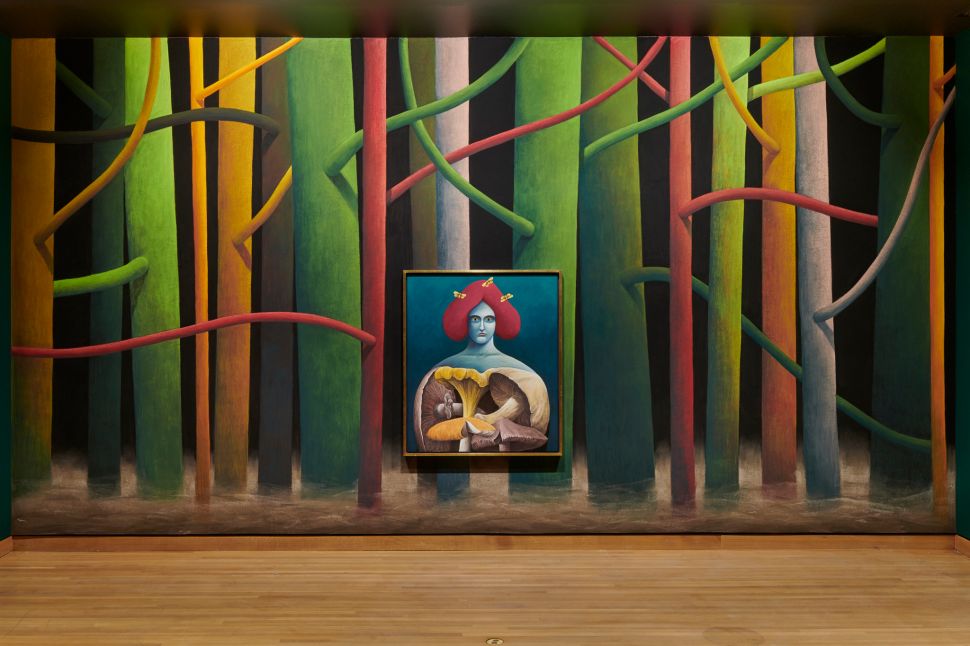



The famous Swiss artist, who is particularly loved in Asia, will have his first solo exhibition in South Korea open during the art week at the Hoam Museum of Art—another institution founded and supported by Samsung and connected with the Leeum Museum Of Art. Centered on themes of longevity and extinction of nature, civilization and human and non-human species, the exhibition will consist of several mesmerizing immersive installations by the artist. Expanding his pictorial universe from the eighty canvases presented on the walls of the space with five pastel murals, Party will take over the museum’s space as in his recent shows, encouraging reconnection with nature and stories with works that are only amplified by the rich natural environment surrounding the museum, where nature and culture coexist in close harmony.
Nicolas Party’s “Dust” is on view through January 19, 2025.
Rebecca Ackroyd at Peres Projects




Following the recent solo exhibitions “Mirror Stage” in Venice and “Period Drama” at the Kestner Gesellschaft in Hanover, Ackroyd’s second exhibition in Seoul is her fourth with the gallery. Titled “The Party Is A Woman,” the show continues the artist’s research into mundane objects that become simulacra of experiences of transience, memory, existence and identity. Approaching all those themes from a distinctively feminine perspective, Ackroyd builds up a series of uncanny encounters where the most ordinary object or body detail becomes disquieting via an unusual change of scale or the mechanization of its most grotesque characteristics. Moving between dream and hallucination, her eerie yet mysterious assemblages and intimidating yet sensual pastels question the relationship between human and machine and the possible distortions in those interactions. A looming sense of peril, danger or decay characterizes most of her sexy yet disquieting works. Intensely psychological, the show follows a subconscious narrative with a series of symbolical hints waiting to be decoded.
Rebecca Ackroyd’s “The Party Is A Woman” opens on September 4 and runs through November 17.

